Triple Scale Hydrometer (Made in USA)
฿390.00
In stock
Triple Scale Hydrometer for Beer and Wine
Measure Specific Gravity, Brix & Potential Alcohol
A glass hydrometer is the most efficient way to determine the sugar or potential alcohol content of beer or wine. A hydrometer works by measuring the amount of dissolved solids in a liquid before and after fermentation to determine how much sugar is converted to alcohol.
This particular hydrometer is a triple-scale hydrometer that displays sugar content in the 3 most common ways. The first is the specific gravity scale of .990 – 1.170 which measures sugar solutions as compared to the density of water. This scale is most commonly used by brewers. The second scale is the Balling Scale (also known as Brix) which measures sugar as a percentage of total weight ranging from 0 to 38%. This is most commonly used by wine makers. The third scale reflects the potential alcohol that can be produced based on the sugar content of the liquid which ranges from 0 to 22%. This scale is applicable to both beer and wine making. As a result, this hydrometer is versatile enough to measure any beer, wine or cider that is up to 22% potential alcohol.
Dimensions:
Length: 10.13 inch (25.7cm)
Diameter (at narrowest point): 0.25 inch (6mm)
Diameter (at widest point): 0.75 inch (19mm)
Working Range:
Specific Gravity: 0.990 – 1.170 (0.002 Resolution)
Balling (Brix): 0 – 38% Sugar (0.05% Resolution)
Potential Alcohol: 0 – 22% (1% Resolution)
Working Temperature: 60°F
The instructions include how to adjust readings for different temperatures.
Item Includes:
1 – Glass Hydrometer
1 – Set of Instructions
1 – Plastic Storage Container/Test Tube
1 – Plastic Cap for Storage Container
How To Use A Hydrometer:
Fill the test tube with enough liquid to float the hydrometer in it before fermentation begins. The reading is the number on the hydrometer that intersects with the surface of the liquid. Record this reading as your Original Gravity (a.k.a. O.G., Starting Gravity). This measurement also indicates the potential alcohol if all of the sugar is fermented.
After fermentation is complete, measure another sample of the liquid to determine the Final Gravity (a.k.a.: F.G., Terminal Gravity). The difference displayed is the amount of sugar that has been converted to alcohol. To determine the actual alcohol content, subtract the percentage of potential alcohol that you recorded from the Starting Gravity from the percentage of potential alcohol that you recorded from the Final Gravity.
A Conversion Chart Included:
Included with the hydrometer is a helpful reference for the following conversions:
– O.G. to °Plato
– O.G. to Potential Alcohol
– Grams to Ounces
– Liters to Gallons
– Alcohol by volume to alcohol by weight
| Weight | 150 g |
|---|
Be the first to review “Triple Scale Hydrometer (Made in USA)” Cancel reply
You must be logged in to post a review.

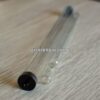
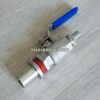
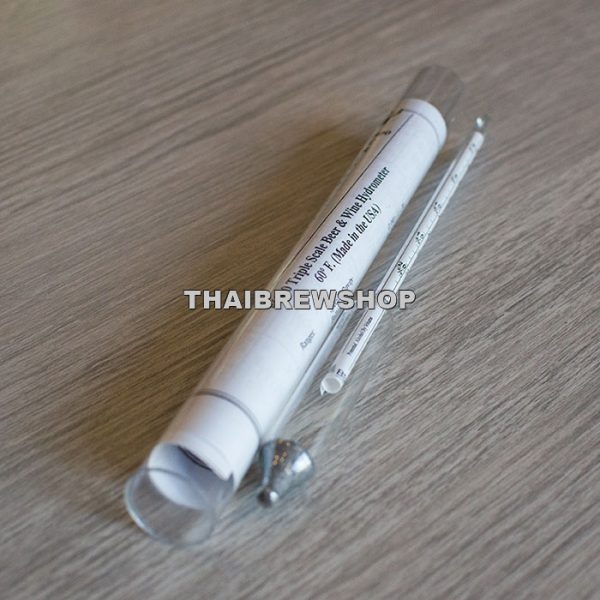
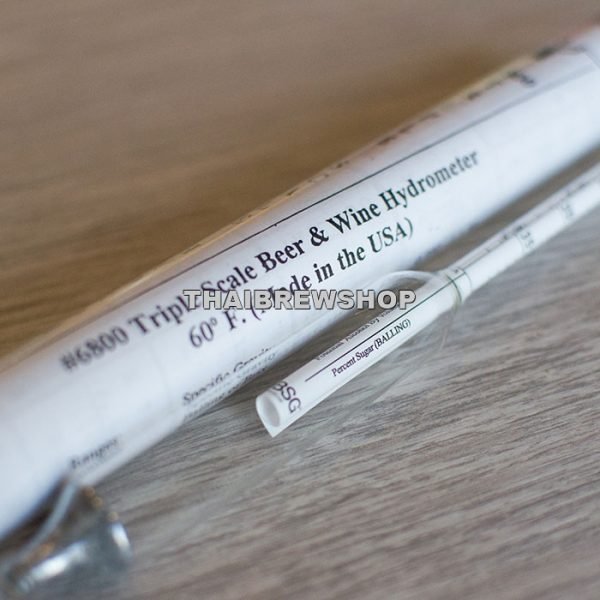
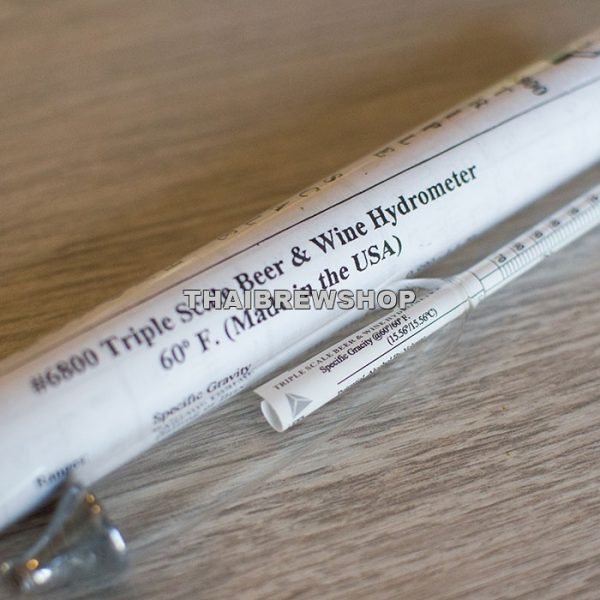
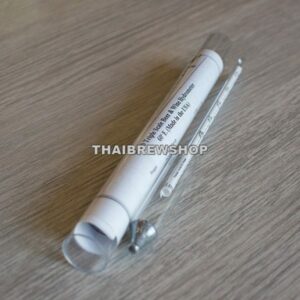
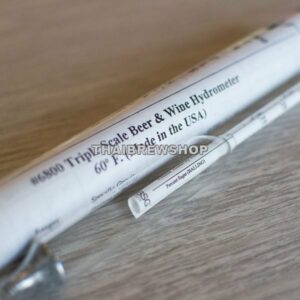
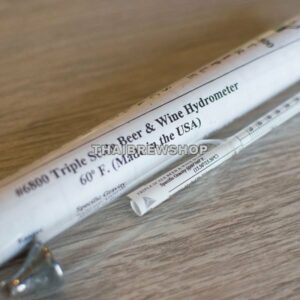
























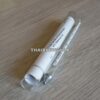
Reviews
There are no reviews yet.